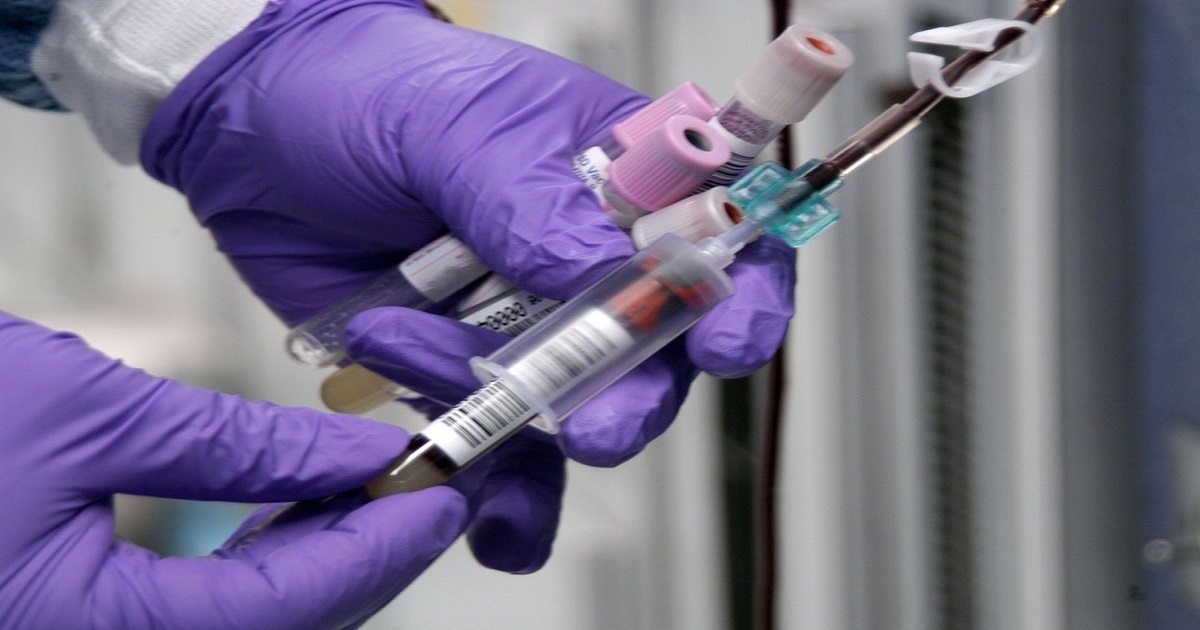Mesothelioma Help Cancer News

Targeting the “Cellular Post Office” May Halt Mesothelioma Growth
One of the most critical breakthroughs needed to slow the number of patients dying from aggressive cancers, including lung cancer and mesothelioma, is to find an effective way to stop the cancer cells from dividing and migrating to other organs. Once cancer metastasizes, the battle to save the patient is significantly more challenging. Now, researchers from England and the U.S. have joined forces to find a way to stop this cancer growth, and they report that it is the “cellular post office” that should be targeted.
Researchers at the University of York and the University of Texas MD Anderson Cancer Center came together to find a way to halt the growth of lung cancer by looking at a key line of communication among cancer cells. The “cellular post office,” or the Golgi apparatus, gathers proteins into a ‘package’ (vesicles) and transports them to areas outside of the cells, thus allowing cancer to metastasize and grow.
The researchers identified two proteins, PAQR111 and Zeb1, that communicate allowing the cancer cells to break free from the lungs and travel throughout the body. The communication takes place in the Golgi, according to a Nov. 24 press release from the University of York.
“Now that we recognise this system, there is the potential to develop a drug that interferes with this communication and prevents the Golgi apparatus from facilitating the movement of the membrane sacks,” said Dr. Daniel Ungar, from the University of York’s Department of Biology, in a Nov. 24 press release from the University of York.
Pleural mesothelioma, a cancer of the lining of the lungs caused by past asbestos exposure, is one cancer that is highly aggressive and spreads quickly to other sites. Survival is typically one year after diagnosis. Research shows that metastasis is the cause of nearly 90 percent of cancer deaths, making it critically important that researchers fully understand how to stop metastasis to increase survival in mesothelioma patients.
See the Nov. 21 issue of The Journal of Clinical Investigation for the full study.

Mesothelioma Nurse Thinks That Laughter Can Be the Best Medicine
“Laughter is the best medicine.” The origin of this quote is thought to be the Old Testament Proverbs 17:22, “A joyful heart is good medicine. But a broken spirit dries up the bones.” The role of laughter in helping people feel better has long been held to be true. When dealing with mesothelioma and all the treatments, there is often not much to laugh about. Patients are told to remain positive, but this is often very difficult.
How important is a good, hearty laugh? According to research, laughter can affect us both physically and emotionally. Physically, laughter can increase our intake of oxygen, stimulates our heart, lung and muscles, and increases the endorphins released by the brain. Laughter can give you a relaxed feeling by activating your stress response and soothing tension by stimulating circulation and reducing some of the physical symptoms of stress.
One of the most important effects of a good laugh is on the immune system. The important role that the immune system plays in health and disease is being explored and there are many opportunities for targeting the immune system for future treatment of diseases. Laughter helps the immune system by releasing neuropeptides that help fight stress. Laughter can also relieve pain by causing the body to produce its own natural painkillers.
Author Norman Cousins, in his book “Anatomy of an Illness,” noted that 10 minutes of laughter, watching a funny movie or TV show, allowed him two hours of pain-free sleep.
A study from the University of Kentucky showed that in a group of women who laughed at a funny movie, those who had laughed out loud had higher levels of natural killer cell activity to help fight diseases, compared to the group who quietly watched.
There isn’t too much downside to laughing. The diagnosis of mesothelioma is not a laughing matter, but trying to find the humor in certain situations can help your overall physical and mental health.
As Dick Van Dyke sang in Mary Poppins, “I love to laugh, loud and long and clear. I love to laugh it’s getting worse every year. The more I laugh the more I fill with glee, and the more the glee, the more I am a merrier me.”
Know more about Mesothelioma and how you can deal with it.

New Blood Test for Lung Cancer May Guide Mesothelioma Treatment
In September, MesotheliomaHelp reported German researchers found that liquid biopsies can be used tomonitor lung cancer patients’ response to treatment in real-time. Now, another team of researchers report a blood test may be useful for identifying “how well and how long a patient might respond to chemotherapy.” For mesothelioma patients who also stand to benefit from this finding, this can mean the difference in their survival.
Researchers from the Cancer Research UK Manchester Institute set out to find a way to distinguish whether cancer cells would be chemosensitive, responsive to chemotherapy, or chemoresistant, resistant to the treatment in small-cell lung cancer (SCLC) patients. Like pleural mesothelioma, a cancer caused by past asbestos exposure, SCLC is highly aggressive requiring an equally aggressive treatment, but finding the correct anti-cancer agent is critical.
The researchers examined the circulating tumor cells (CTCs), cancer cells that breakaway and escape into the bloodstream where they circulate and migrate to other organs in the body, in over 30 patients with SCLC. The researchers discovered “patterns of a genetic fault” were linked to how well the selected chemotherapy would work. The team identified a classifier that correctly assigned 83.3% of the cases as chemorefractory or chemosensitive.
“Unfortunately, we have very few treatment options for patients with SCLC, and none at all for those whose cancer is resistant to chemotherapy,” said lead researcher Professor Caroline Dive in a Nov. 21 press release from Cancer Research UK Manchester Institute at The University of Manchester. “Our study reveals how blood samples could be used to anticipate how lung cancer patients may respond to treatments.”
http://www.cruk.manchester.ac.uk/news?newsId=146
Often called “asbestos cancer,” mesothelioma is highly aggressive and is resistant to many standard cancer treatments. Currently, there is no known cure for mesothelioma, and the average survival time varies from 4 – 18 months after diagnosis. Patients with lung cancer and mesothelioma often undergo the same treatment protocol, so a breakthrough like this brings hope to the the mesothelioma community.
“By identifying differences in the patterns of genetic faults between patients, we now have a starting point to begin to understand more about how drug resistance develops in patients with this aggressive form of lung cancer.”
The full study can be found in the Nov. 21 issue of Nature Medicine.
http://www.nature.com/nm/journal/v22/n3/full/nm.4041.html

Stopping Mesothelioma Tumors From Reaching Blood Supply May Improve Survival
Mesothelioma is a signature cancer of asbestos, affecting the lining of the lungs or abdomen. The cancer is extremely aggressive, and the cancer cells continue to grow and multiply as additional blood vessels develop bringing more food and oxygen to them. Now, researchers believe they have found the key to the way mesothelioma tumors tap into blood vessels opening the door for “treatments to prolong life” for patients.
Researchers from the Flinders University of Adelaide, Australia report they have found that mesothelioma tumors do not wait for blood vessels to form, rather the cancer cells actually “transform into blood vessels” fueling their own growth. According to a Nov. 14 article from ABC Australia, the discovery will better help scientists understand how to treat the insidious asbestos-caused cancer.
“Instead of waiting for the outside of the tissue to grow blood vessels in, the tumour cells themselves branch out, growing blood vessels that reach out into surrounding tissues, tapping into the native vasculature,” said lead researcher Associate Professor Sonja Klebe.
There are cancer treatments available that are designed to inhibit the formation of new blood vessels to tumors, slowing the growth and spread of the tumors. Avastin, sometimes used in mesothelioma treatment, was the first U.S. Food and Drug Administration – approved biological therapy designed to inhibit blood vessel formation.
According to Klebe, however, these treatments target the blood vessels that grow into the cancer as opposed to the other way around. She believes treatments need to look at both approaches to ultimately starve the tumors of blood.
“I think a cure for mesothelioma is not on the horizon in the immediate future, largely because we don’t detect the tumours early enough,” Klebe said.”But I think we are closer to finding treatments that will prolong life, with less impacts on quality of life.”
Nearly 3,000 Americans are diagnosed with mesothelioma each year and nearly the same number die from the cancer. According to the article, twelve Australians die each week from mesothelioma and the country has one of the highest rates of the disease in the world. Currently, there is no cure for the cancer. Finding an effective way to stop tumor growth is needed to improve survival and quality of life in mesothelioma patients.

Mesothelioma Nurse is Thankful for Patients and Researchers for Continuing the Fight
Thanksgiving is a time to reflect upon what we are thankful for in our lives. Everyone has their own personal list. For some the list is very simple, others more complex. For patients and families with mesothelioma this can be a tough time. Living with mesothelioma can be difficult and scary, but as researchers and patients gain knowledge of this disease, we are learning what works.
At a conference last week that I attended regarding mesothelioma, toward the end of the conference a gentleman spoke about his fight with mesothelioma. He had surgery two years ago and looked great. He was happy as he talked about his current life, he spoke with no evidence of shortness of breath. He continues to work, enjoys spending time with his grandchildren, goes on vacations, and even plays golf. His presentation was only five minutes, but it had a huge impact on the audience.
The audience was made up of doctors, scientists, nurses, and pharmaceutical companies that are involved with mesothelioma clinical trials. For many it was moving to see someone who has benefitted from research. For them, seeing the connection between their work and the impact on someone’s life is what motivates them to keep trying. The takeaway from this conference was one of optimism and appreciation.
As a representative of the medical community, I can say we are thankful to the patients and researchers and the entire mesothelioma community for continuing their battle against mesothelioma. We are thankful for the progress that continues to be made and the dedication that is required to keep moving forward towards a cure.
Know more about Mesothelioma and how you can deal with it.
Free Mesothelioma Patient & Treatment Guide
We’d like to offer you our in-depth guide, “A Patient’s Guide to Mesothelioma,” absolutely free of charge.
It contains a wealth of information and resources to help you better understand the condition, choose (and afford) appropriate treatment, and exercise your legal right to compensation.
Download Now